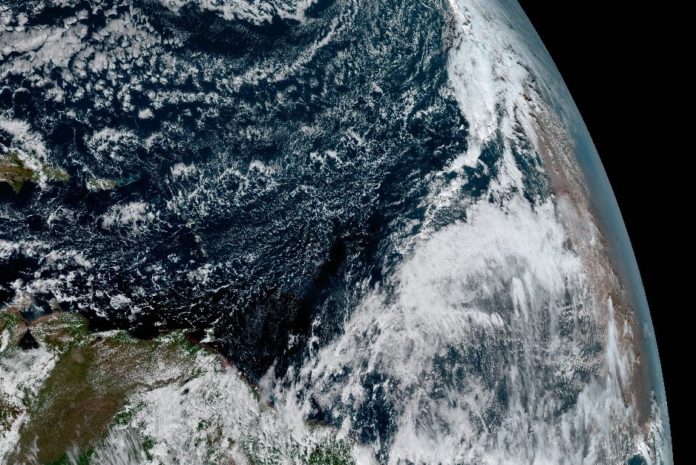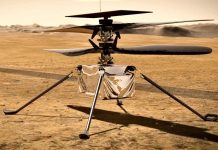
Nov. 21 (UPI) — While NASA has been using satellites to measure the height of the ocean for the last 28 years, the Sentinel-6 Michael Freilich satellite is slated to offer greater precision than ever before.
Sentinel-6, jointly developed by NASA, the European Space Agency, the European Organization for the Exploitation of Meteorological Satellites and NOAA, is set to launch Saturday at 12:17p.m. EST from Space Launch Complex 4 East at Vandenberg Air Force Base in California.
The satellite will use a trio of instruments to calculate its position and distance above the ocean’s surface as the satellite follows its polar orbit.
“It’s going to be a new star in the sky, giving us the best possible measurements of sea level rise, ocean waves and wind,” Craig Donlon, Sentinel-6 mission scientist with ESA, said during a press conference on Friday.
To measure the height of sea surface, Sentinel-6 will use its state-of-the-art Poseidon-4 radar altimeter to bounce a radar pulse off the top of the ocean and measure the time it takes for the pulse to return to the satellite.
Because water vapor in the atmosphere can influence the speed of the radar pulse, a second instrument, the Advanced Microwave Radiometer for Climate, will measure water vapor, allowing the altimeter to properly calibrate its measurements.
In addition to measuring the height of the ocean surface, Sentinel-6’s altimeter will be able to calculate the angle at which radar pulses bounce off the ocean surface, which will help scientists monitor the height of ocean waves.
The instrument will also be able to measure the roughness of the ocean surface, data that will allow researchers to keep tabs on ocean winds.
Sentinel-6 will follow the same orbit as its predecessor, as well its successor, Sentinel-6B, scheduled for launch in 2025. The sibling satellites will provide continuity to the effort to monitor changes to Earth’s sea surface topography.
“Sea level rise isn’t going to go away any time soon, so we have to keep measuring it, and the longer the record, the better,” said Josh Willis, Sentinel-6 Michael Freilich project scientist and researcher at NASA’s Jet Propulsion Laboratory.
Scientists at NASA and NOAA will use data from a variety of other satellites and surface-level instruments to provide context for the data collected by Sentinel-6.
“It’s when we combine altimetry observations with observations from our gravity-measuring missions and so forth that we can see, not only that sea levels are rising, but also how much of that change is coming from melting ice sheets and glaciers and how much is coming from thermal expansion of the oceans,” said Karen St. Germain, director of the Earth Science Division at NASA.
Though global warming reports often focus on changes in air temperature, the majority of the sun’s energy is absorbed by the ocean. That energy is transferred into Earth’s atmosphere only later.
“Global warming is really ocean warming,” Willis said.
Warming isn’t happening uniformly everywhere, and because the ocean expands as it warms, researchers will be able to use Sentinel-6 observations to more precisely monitor where the ocean is warming fastest.
“Because 70 percent of earth’s surface is covered by the ocean, we’re literally watching the shape of the planet change before our very eyes,” Willis said.
In addition to helping scientists keep long-term records of sea-level rise, Sentinel-6 data will also help scientists more accurately model and predict weather patterns.
Its ability to detect areas of taller, warmer water will be particular useful to scientists working to predict the paths and intensities of hurricanes, as well as to research studying the influence of El Nino on weather patterns around the world.
Another instrument, the Global Navigation Satellite System-Radio Occultation, or GNSS-RO, will aid the work of meteorologists and climate scientists by intercepting the radio signals of communication satellites appearing and disappearing over Earth’s horizon.
By measuring slight changes in the radio signals as they bend around the curvature of the planet, GNSS-RO will be able to extract information about temperature and humidity at different altitudes.
Sentinel-6 will carry more than just instruments.
As it orbits the Earth more than 800 miles above its surface, the satellite will carry the name and legacy of Michael Freilich, the former director of NASA’s Earth Science Division who passed away earlier this year.
Freilich was instrumental in advancing efforts to monitor Earth’s oceans from space.
“Mike was a leader in the field and a friend and a mentor to many of us in the earth sciences division,” St. Germain said.






